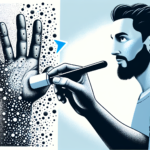<!DOCTYPE html>
<html lang="en">
<head>
<meta charset="UTF-8">
<meta name="viewport" content="width=device-width, initial-scale=1.0">
<title>Image Manipulation Techniques and Tools</title>
<style>
body {
font-family: Arial, sans-serif;
line-height: 1.6;
margin: 0;
padding: 0;
max-width: 1200px;
margin: auto;
padding: 20px;
}
h1, h2 {
color: #333;
}
p, ul {
margin-bottom: 20px;
}
ul {
list-style-type: disc;
padding-left: 20px;
}
faq-section {
background-color: #f9f9f9;
padding: 20px;
border-radius: 5px;
}
faq-item {
margin-bottom: 20px;
}
</style>
</head>
<body>
<h1>Mastering the Art of Image Manipulation: Techniques and Tools</h1>
<p>The digital age has made image manipulation an essential skill in various domains, ranging from professional photography to social media management. Whether you are a graphic designer, photographer, marketer, or hobbyist, mastering the art of image manipulation can greatly enhance your creative capabilities. This article delves into the techniques and tools that can help you harness the power of image manipulation effectively.</p>
<h2>Understanding Image Manipulation</h2>
<p>Image manipulation involves altering or enhancing digital images to achieve a desired outcome. This could range from simple edits like adjusting brightness and contrast to more complex transformations like removing objects or adding new elements. The goal is to create visually appealing and impactful images that can convey the intended message.</p>
<h2>Essential Techniques</h2>
<h3>1. Cropping and Resizing</h3>
<p>Cropping allows you to remove unwanted parts of an image, focusing on the essential elements. Resizing, on the other hand, changes the dimensions of the image, making it suitable for different platforms or uses. These basic yet crucial techniques can drastically improve the composition and usability of an image.</p>
<h3>2. Color Correction</h3>
<p>Color correction involves adjusting the colors, brightness, and contrast of an image to make it more visually appealing. This technique helps in enhancing the natural colors and correcting any color imbalances. Tools like Adobe Photoshop and Lightroom offer advanced color correction features that can make your images pop.</p>
<h3>3. Retouching</h3>
<p>Retouching is the process of improving the image quality by removing imperfections. This could include blemishes on a portrait, dust marks on a product image, or even stray objects in the background. Techniques like cloning, healing, and using spot removal tools are commonly used in retouching.</p>
<h3>4. Layering and Masking</h3>
<p>Layering and masking are powerful techniques that allow for non-destructive editing. Layers let you stack multiple elements in a single image, while masks give you the control to hide or reveal parts of a layer. This is particularly useful for complex manipulations like combining multiple photos or creating digital art.</p>
<h3>5. Adding Text and Graphics</h3>
<p>Adding text and graphical elements like shapes, icons, or logos can enhance the message you want to convey. This technique is widely used in creating advertisements, social media posts, and promotional materials. Software like Adobe Illustrator and Canva offer robust tools for adding and manipulating text and graphics.</p>
<h2>Popular Tools for Image Manipulation</h2>
<h3>Adobe Photoshop</h3>
<p>Adobe Photoshop is the gold standard in image manipulation software. It offers an extensive range of features, including advanced selection tools, layer manipulation, and various filters and effects. Its versatility makes it suitable for everything from basic edits to complex photo manipulations.</p>
<h3>GIMP (GNU Image Manipulation Program)</h3>
<p>GIMP is a free, open-source alternative to Photoshop. It provides a wide array of features for image retouching, composition, and authoring. Though it may not have the same level of polish as Photoshop, its powerful capabilities and the fact that it's free make it a popular choice for many users.</p>
<h3>Adobe Lightroom</h3>
<p>Adobe Lightroom is another powerful tool, particularly favored by photographers for its advanced photo organizing and editing capabilities. It excels in batch processing and offers excellent tools for color correction, exposure adjustment, and other enhancements.</p>
<h3>Canva</h3>
<p>Canva is a user-friendly tool designed for creating social media posts, presentations, posters, and other visual content. While it may not offer the advanced features of Photoshop, its simplicity and ease of use make it accessible to beginners and excellent for quick projects.</p>
<h3>Corel PaintShop Pro</h3>
<p>Corel PaintShop Pro is a robust alternative to Photoshop, offering many of the same features at a lower price point. It includes tools for photo editing, graphic design, and digital painting, making it a versatile choice for different types of creative projects.</p>
<h2>Advanced Techniques</h2>
<h3>1. High Dynamic Range (HDR) Imaging</h3>
<p>HDR imaging captures multiple photographs at different exposure levels and combines them to create a single image with a broader range of luminance levels. This technique is particularly useful for landscape photography and scenes with high contrast, ensuring that both the highlights and shadows are well-exposed.</p>
<h3>2. Compositing</h3>
<p>Compositing involves combining multiple images to create a single, cohesive scene. This technique is widely used in advertising, film production, and digital art. Mastery of tools like layers, masking, and blending modes is essential for successful compositing.</p>
<h3>3. Frequency Separation</h3>
<p>Frequency separation is a technique used in portrait retouching to separate the image into high-frequency (texture) and low-frequency (color and tone) layers. This allows for precise adjustments to skin texture and tone without affecting other elements of the image.</p>
<h3>4. Image Restoration</h3>
<p>Image restoration aims to recover and enhance old or damaged photographs. Techniques like dust and scratch removal, color correction, and even re-painting missing areas can bring life back to these valuable images. Tools like Photoshop's healing and cloning brushes are commonly used for this purpose.</p>
<h2>Applications of Image Manipulation</h2>
<h3>1. Advertising and Marketing</h3>
<p>High-quality, visually appealing images are crucial in advertising and marketing. Image manipulation techniques are used to create eye-catching ads, social media posts, and promotional materials that capture the audience's attention and convey the desired message effectively.</p>
<h3>2. Photography</h3>
<p>Photographers use image manipulation to enhance their shots, correct flaws, and bring their creative visions to life. Techniques like color correction, retouching, and compositing enable photographers to produce stunning, professional-quality images.</p>
<h3>3. Digital Art</h3>
<p>Digital artists rely heavily on image manipulation tools to create intricate and imaginative works of art. The ability to combine multiple elements, apply various effects, and manipulate images with precision allows artists to push the boundaries of creativity.</p>
<h3>4. Social Media</h3>
<p>In the age of social media, captivating visuals are essential for engagement. Image manipulation tools and techniques enable users to create striking posts, stories, and profiles that stand out in crowded feeds and attract followers.</p>
<h3>5. E-commerce</h3>
<p>Product images play a significant role in e-commerce. High-quality, professionally edited images can enhance the product's appeal, instill confidence in buyers, and ultimately drive sales. Techniques like background removal, color correction, and retouching are common in product photography for e-commerce.</p>
<h2>Conclusion</h2>
<p>Mastering the art of image manipulation opens up a world of creative possibilities. Whether you are looking to enhance your photography skills, create compelling advertisements, or produce stunning digital art, understanding and utilizing the right techniques and tools is key. With practice and experimentation, you can develop your style and take your image manipulation skills to new heights.</p>
<h2>FAQs</h2>
<div class="faq-section">
<div class="faq-item">
<h3>1. What is the best software for beginners in image manipulation?</h3>
<p>For beginners, Canva is an excellent choice due to its simplicity and ease of use. It provides a range of templates and tools that make creating visually appealing images straightforward. GIMP is another good option for those looking for more advanced features without any cost.</p>
</div>
<div class="faq-item">
<h3>2. What are some tips for achieving realistic photo manipulations?</h3>
<p>To achieve realistic photo manipulations, pay attention to details like lighting, shadows, and perspective. Use high-quality images and take advantage of layers and masks for non-destructive editing. Blending modes and careful adjustment of color and contrast also play crucial roles in creating seamless compositions.</p>
</div>
<div class="faq-item">
<h3>3. Can you perform image manipulation on a smartphone?</h3>
<p>Yes, several mobile apps allow for image manipulation, such as Adobe Photoshop Express, Snapseed, and VSCO. While these apps may not offer the full functionality of desktop software, they are powerful enough for basic edits and enhancements on the go.</p>
</div>
<div class="faq-item">
<h3>4. Is it ethical to manipulate images?</h3>
<p>Ethics in image manipulation depend on context. In art and personal projects, there are fewer restrictions. However, in journalism, advertising, and other fields, ethical guidelines should be followed to avoid misleading or deceptive practices. Always consider the potential impact of manipulated images on your audience.</p>
</div>
<div class="faq-item">
<h3>5. How can I learn advanced image manipulation techniques?</h3>
<p>Many resources are available for learning advanced image manipulation techniques, including online courses, tutorials, and books. Platforms like Udemy, CreativeLive, and LinkedIn Learning offer comprehensive courses taught by industry professionals. Additionally, experimenting with different tools and techniques will help you refine your skills over time.</p>
</div>
</div>
</body>
</html>










